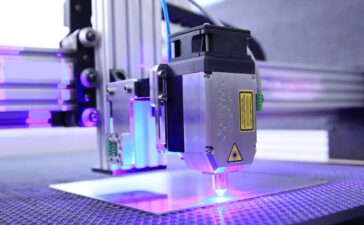When it comes to off-roading, adventure is around every turn. However, the joy of conquering rugged trails and rocky terrains is not without its drawbacks, the most serious of which is the risk of vehicle damage. This is where bash plates come into play. Consider them armour for your vehicle, built to withstand hits and safeguard critical components from tough circumstances.
Whether you’re traversing mud puddles or ascending steep mountains, having a dependable bash plate can be the difference between a smooth ride and expensive repairs. If you want to keep your vehicle safe while having fun, you must first grasp what bash plates are and how they work. Let’s delve into this comprehensive guide on keeping your ride safe on any terrain!

What are Bash Plates, and why are they important for off-road vehicles?
Bash plates are protective components mounted on the undersides of off-road vehicles. They are made of sturdy materials like aluminium or steel and protect important sections like the engine oil pan, gearbox and transfer case from rocks, debris and other threats.
Off-roading scenarios frequently involve unanticipated challenges. If you’re not properly protected, a sudden rock strike can inflict considerable damage. No need to worry, bash plates act as a deterrent to these possible risks.
Their value extends beyond protection; they improve your vehicle’s ability to navigate tough terrain with confidence. With bash plates in place, you may push your limits without always worrying about what comes next.
Furthermore, many bash plates are designed to be both lightweight and durable. This means that you don’t have to choose between performance and protection—it’s a win-win situation when exploring nature’s raw beauty.
Bash plate types include skid plates, belly pans, and more
There are various types of bash plates, each designed to meet certain protective requirements. Skid plates are one of the most common alternatives. They protect the underbelly of your vehicle from pebbles and debris.
Belly pans provide complete coverage for vulnerable components such as gasoline tanks and transfer cases. These plates can be thicker than skid plates, adding an added layer of protection when travelling through difficult terrain.
The differential covers protect important gearboxes from impacts. They are crucial for off-road enthusiasts who want to push their vehicles to their utmost.
Additionally, some manufacturers design unique bash plate systems specialised to specific models or off-roading methods. This personalisation provides optimum protection where it is most required.
With so many options available, selecting the proper combination can make all the difference in protecting your vehicle’s durability on rough journeys.
Benefits of Installing a Bash Plate on Your Vehicle
Installing a bash plate on your off-road vehicle has various benefits for both performance and safety. These tough shields are intended to absorb impacts from rocks, logs, and other obstructions encountered on rocky terrain.
One significant advantage is shielding for critical components such as the engine oil pan and gearbox. A properly fitted bash plate protects against potential damage and saves money on repairs.
Additionally, bash plates can increase ground clearance. They provide a smoother undercarriage profile, allowing vehicles to glide over uneven terrain without becoming stuck or snagged.
Another advantage is longevity. These plates, made of robust materials such as aluminium or steel, can survive extreme circumstances while remaining structurally sound.
Installing a bash plate might enhance confidence while attempting difficult routes. Knowing your vehicle has more armour gives you the confidence to push the limits and go on new experiences.

Choosing the Ideal Bash Plate for Your Vehicle
Choosing the correct bash plate for your vehicle requires careful consideration of various aspects. First, consider your off-road environment. Rocky terrain necessitates a more durable alternative than smooth paths.
The next step is selecting a material. Aluminium plates are lightweight and corrosion-resistant, whereas steel provides more durability but adds weight. Determine what best fits your driving style.
Check compatibility with your vehicle’s make and model. A properly fitting bash plate eliminates unwanted damage during installation and use.
Weight distribution is also important; a good design guarantees that it has no negative impact on handling.
Read evaluations from other enthusiasts who have tested various solutions to determine performance in real-world scenarios. Making an informed decision will improve both safety and enjoyment on those challenging journeys ahead.




